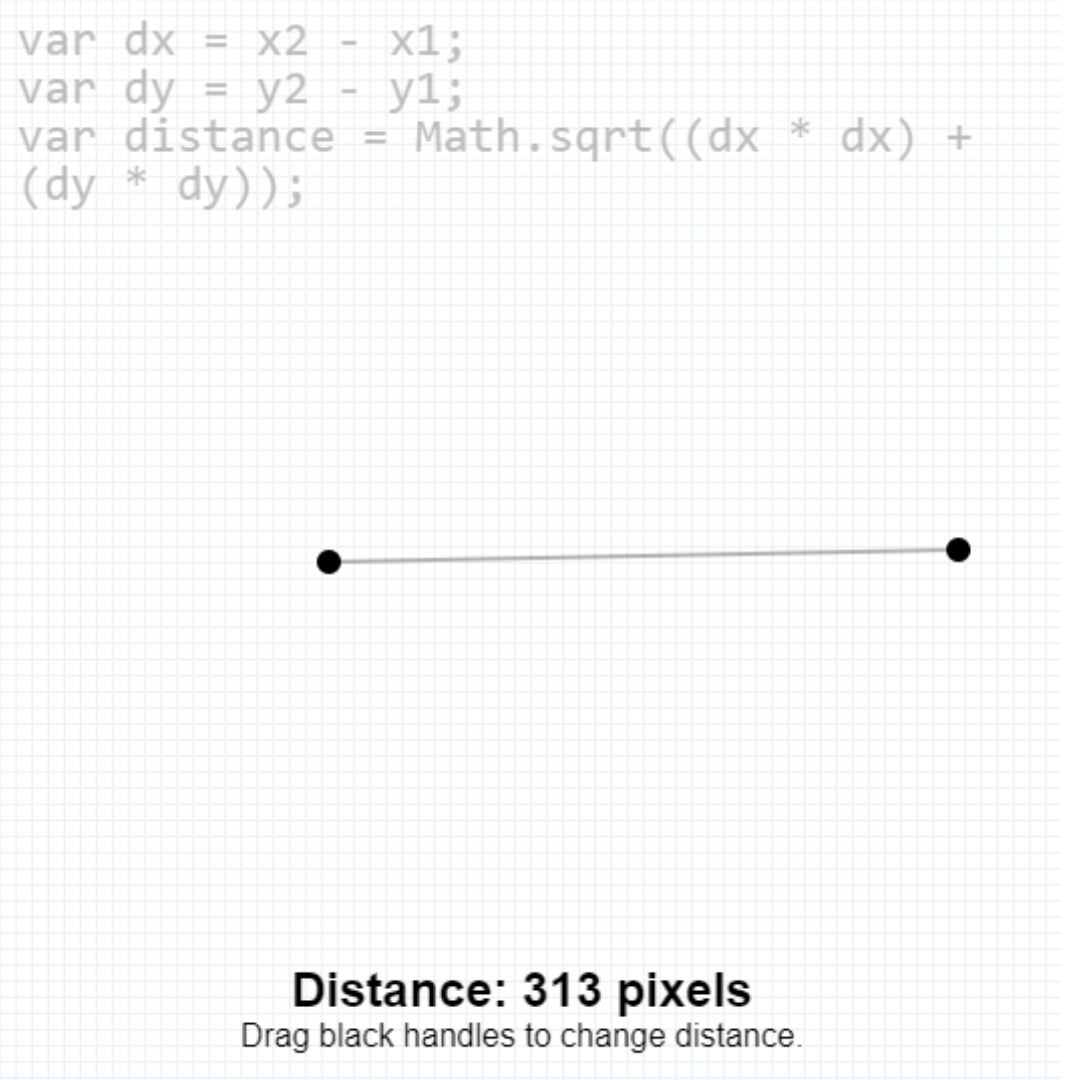Discover the top 15 Hadoop ecosystem components in 2024 for efficient data processing, analytics, and management. Learn how to implement each component and optimize your Hadoop environment for maximum performance.

Apache Hadoop is an open-source framework used for storing and processing large data sets in a distributed environment. The Hadoop ecosystem comprises various tools, frameworks, and libraries that complement the Hadoop framework and extend its functionality. In this article, we will discuss the top 15 Hadoop ecosystem components that are expected to gain more importance in 2024.
Table of Contents
- Introduction
- Hadoop Ecosystem Overview
- Hadoop Distributed File System (HDFS)
- MapReduce
- YARN
- Hive
- Pig
- Spark
- Sqoop
- Flume
- Kafka
- Storm
- Oozie
- Zookeeper
- Ambari
- HBase
- Mahout
- Conclusion
I. Introduction
The Hadoop ecosystem is vast and includes several components. Hadoop is an open-source software framework that is used to store and process large datasets across a cluster of commodity hardware. Hadoop is designed to scale from a single server to thousands of machines, each offering local computation and storage.
In 2024, the Hadoop ecosystem has grown to become an even more comprehensive set of technologies that provide various functionalities. In this article, we will take a look at the top 15 Hadoop ecosystem components in 2024 that can help you manage big data.
II. Hadoop Ecosystem Overview
Hadoop is a distributed computing framework that allows efficient processing, storage, and analysis of large-scale data. The Hadoop ecosystem consists of various components that enable distributed data processing and analytics. These components are organized into layers, including storage, processing, and management.
The storage layer of the Hadoop ecosystem is provided by HDFS, which is a distributed file system that stores and manages large data sets across multiple nodes in a Hadoop cluster. HDFS provides high reliability, scalability, and fault tolerance for data storage.
The processing layer of the Hadoop ecosystem includes MapReduce, a distributed data processing framework used for large-scale data processing in Hadoop. It is designed to parallelize data processing across a cluster of nodes, enabling efficient data processing for large data sets. Additionally, Spark is another popular data processing framework that provides faster and more efficient data processing than MapReduce.
The management layer of the Hadoop ecosystem is provided by YARN, which is responsible for managing cluster resources and scheduling Hadoop jobs. It enables flexible resource allocation and efficient job scheduling, improving the overall performance of a Hadoop cluster. Additionally, components like Hive and Pig provide SQL-like query tools and a high-level data flow language, respectively, for data processing and analysis.
To build an effective Hadoop environment, it is important to choose the right components for a specific use case. Each component has its own strengths and weaknesses, and the appropriate components need to be selected based on the specific requirements of the use case.
III. Hadoop Distributed File System (HDFS)
Hadoop Distributed File System (HDFS) is a distributed file system designed for storing and managing large data sets across multiple nodes in a Hadoop cluster. It provides high reliability, scalability, and fault tolerance for data storage. Some key features of HDFS include:
- Scalability: HDFS can store and manage data sets that are in the petabyte range, allowing organizations to efficiently store and manage large amounts of data.
- Fault tolerance: HDFS provides fault tolerance by replicating data across multiple nodes in a Hadoop cluster. In case of node failures, the system can still access the data by reading from the replicated copies.
- High availability: HDFS provides high availability by automatically detecting node failures and transferring the data to other nodes to ensure uninterrupted access to the data.
HDFS follows a master-slave architecture, where a single NameNode acts as the master node and manages the file system metadata, while multiple DataNodes act as slave nodes and store the actual data. The NameNode stores the file system metadata, including information about the file name, size, permissions, and locations of the data blocks. The DataNodes store the actual data in blocks.
When a client application wants to access data stored in HDFS, it communicates with the NameNode to locate the data blocks and then retrieves the data from the corresponding DataNodes. This allows for parallel access to data and efficient processing of large data sets.
Using HDFS for data storage provides several benefits, including efficient storage and management of large-scale data, fault tolerance, and scalability. It also allows for parallel data access and processing, making it ideal for use cases that involve processing large data sets.
IV. MapReduce
MapReduce is a distributed data processing framework used in Hadoop for large-scale data processing. It is designed to parallelize data processing across a cluster of nodes, enabling efficient data processing for large data sets. MapReduce is a key component of the Hadoop ecosystem and is used for various data processing tasks, including data filtering, sorting, and aggregation.
The MapReduce algorithm is based on two key operations: map and reduce. In the map operation, the input data is divided into multiple chunks and processed in parallel across multiple nodes in the Hadoop cluster. Each node processes its chunk of data and generates intermediate key-value pairs. In the reduce operation, the intermediate key-value pairs are aggregated based on the key, and the final output is generated.
The MapReduce algorithm follows a master-slave architecture, where a single JobTracker node acts as the master node and manages the overall processing of the data. Multiple TaskTracker nodes act as slave nodes and perform the map and reduce operations on the data.
Using MapReduce for distributed data processing provides several benefits, including:
- Scalability: MapReduce is designed to handle large-scale data processing and can scale to process data sets in the petabyte range.
- Fault tolerance: MapReduce provides fault tolerance by replicating data and processing tasks across multiple nodes in the Hadoop cluster. In case of node failures, the system can still access the data and continue processing.
- Efficient data processing: MapReduce enables efficient data processing by processing data in parallel across multiple nodes, reducing processing time and increasing efficiency.
Overall, MapReduce is a powerful data processing framework that enables efficient processing of large-scale data in Hadoop. Its ability to scale, handle fault tolerance, and provide efficient data processing make it an essential component in the Hadoop ecosystem.
V. YARN
YARN (Yet Another Resource Negotiator) is a cluster resource management system that is a key component of the Hadoop ecosystem. It is designed to manage resources across a Hadoop cluster and enable efficient data processing for large-scale data sets. Some key features of YARN include:
- Scalability: YARN can manage resources for large-scale data processing, enabling organizations to efficiently manage and process large data sets.
- Flexibility: YARN can support various data processing frameworks, including MapReduce, Spark, and Tez, making it a versatile resource management system.
- Resource allocation: YARN can allocate resources dynamically based on the processing requirements of different data processing frameworks, enabling efficient resource utilization.
YARN's role in Hadoop data processing is to manage cluster resources and provide resource isolation for different data processing frameworks. It enables efficient resource utilization by allocating resources dynamically based on the processing requirements of different data processing frameworks. This allows for efficient utilization of cluster resources, reducing processing time and increasing efficiency.
YARN follows a master-slave architecture, where a single ResourceManager node acts as the master node and manages the overall resource allocation for the cluster. Multiple NodeManager nodes act as slave nodes and manage the individual nodes' resources and execute the data processing tasks.
Using YARN for cluster resource management provides several benefits, including:
- Efficient resource utilization: YARN enables efficient resource utilization by dynamically allocating resources based on the processing requirements of different data processing frameworks.
- Scalability: YARN can manage resources for large-scale data processing, making it an ideal resource management system for processing large data sets.
- Flexibility: YARN can support various data processing frameworks, making it a versatile resource management system that can support different use cases.
Overall, YARN is a powerful resource management system that enables efficient cluster resource management and enables efficient data processing for large-scale data sets in the Hadoop ecosystem.
VI. Hive
Hive is a data warehousing and SQL-like query processing system that is a key component of the Hadoop ecosystem. It is designed to enable users to analyze large-scale data sets stored in Hadoop using SQL-like queries. Some key features of Hive include:
- Schema flexibility: Hive provides schema flexibility, enabling users to store and process data with varying structures and formats.
- SQL-like queries: Hive supports SQL-like queries, making it easier for users familiar with SQL to analyze data in Hadoop.
- Data management: Hive provides a centralized metadata repository for managing data stored in Hadoop.
Hive's role in Hadoop data analytics and query processing is to provide a SQL-like interface for querying and analyzing large-scale data sets stored in Hadoop. It enables users to write SQL-like queries to analyze data stored in Hadoop and generates MapReduce jobs to process the data.
Hive follows a master-slave architecture, where a single HiveServer2 node acts as the master node and manages the overall query processing for the cluster. Multiple HiveMetastore nodes act as slave nodes and manage the metadata for the data stored in Hadoop.
Using Hive for SQL-like queries in Hadoop provides several benefits, including:
- Familiarity: Hive supports SQL-like queries, making it easier for users familiar with SQL to analyze data in Hadoop.
- Flexibility: Hive provides schema flexibility, enabling users to store and process data with varying structures and formats.
- Scalability: Hive can scale to process large-scale data sets stored in Hadoop, enabling organizations to efficiently analyze and process data.
Overall, Hive is a powerful data warehousing and SQL-like query processing system that enables efficient data analytics and query processing for large-scale data sets stored in Hadoop. Its support for SQL-like queries, schema flexibility, and scalability make it an essential component in the Hadoop ecosystem.
VII. Pig
Apache Pig is a dataflow language and execution framework for Hadoop that is designed to simplify the process of processing and analyzing large-scale datasets. It is a key component of the Hadoop ecosystem that enables users to perform complex data transformations and analytics using a simple, high-level scripting language. Some key features of Pig include:
- Dataflow language: Pig uses a dataflow language, which makes it easy for users to express complex data transformations and analytics tasks in a simple, high-level language.
- Rich set of operators: Pig provides a rich set of operators for performing data transformations and analytics tasks, including filtering, sorting, grouping, and joining.
- Extensibility: Pig is highly extensible and can be easily extended using User Defined Functions (UDFs) written in Java or other scripting languages.
Pig's role in Hadoop data processing and analytics is to simplify the process of performing complex data transformations and analytics tasks on large-scale datasets. It enables users to write scripts in a high-level language that express complex data transformations and analytics tasks, and then generates MapReduce jobs to process the data.
Pig follows a master-slave architecture, where a single PigServer node acts as the master node and manages the overall processing for the cluster. Multiple PigExecutors act as slave nodes and execute the generated MapReduce jobs.
Using Pig for data transformations and analysis provides several benefits, including:
- Simplified data processing: Pig's dataflow language and rich set of operators make it easy to express complex data transformations and analytics tasks in a simple, high-level language.
- Extensibility: Pig is highly extensible and can be easily extended using UDFs written in Java or other scripting languages.
- Scalability: Pig can scale to process large-scale datasets stored in Hadoop, enabling organizations to efficiently process and analyze data.
Overall, Pig is a powerful dataflow language and execution framework for Hadoop that simplifies the process of performing complex data transformations and analytics tasks on large-scale datasets. Its simplicity, extensibility, and scalability make it an essential component in the Hadoop ecosystem.
VIII. Spark
Apache Spark is an open-source distributed computing system that is designed to process large-scale data processing and analytics workloads. It is a key component of the Hadoop ecosystem that enables users to perform faster and more efficient data processing using a unified engine for batch processing, real-time processing, and machine learning workloads. Some key features of Spark include:
- In-memory processing: Spark uses in-memory processing to reduce the time required for data processing and analytics tasks.
- Unified engine: Spark provides a unified engine for batch processing, real-time processing, and machine learning workloads, which makes it easy to process data across multiple workloads.
- Resilient Distributed Datasets (RDDs): Spark uses RDDs, which are fault-tolerant data structures that can be processed in parallel across a cluster of machines.
Spark's role in Hadoop data processing and analytics is to provide faster and more efficient data processing for large-scale datasets. It enables users to process data using a unified engine for batch processing, real-time processing, and machine learning workloads, which makes it easy to process data across multiple workloads.
Spark follows a master-slave architecture, where a single Spark master node manages the overall processing for the cluster. Multiple Spark worker nodes act as slave nodes and execute the processing tasks.
Using Spark for data processing and analytics provides several benefits, including:
- Faster processing: Spark's in-memory processing and distributed processing capabilities enable faster processing of large-scale datasets.
- Unified engine: Spark's unified engine for batch processing, real-time processing, and machine learning workloads makes it easy to process data across multiple workloads.
- Scalability: Spark can scale to process large-scale datasets stored in Hadoop, enabling organizations to efficiently process and analyze data.
Overall, Spark is a powerful distributed computing system that provides faster and more efficient data processing for large-scale datasets. Its unified engine, in-memory processing, and scalability make it an essential component in the Hadoop ecosystem.
IX. Sqoop
Apache Sqoop is a tool designed to transfer data between Hadoop and relational databases, such as MySQL, Oracle, and SQL Server. Sqoop is a key component of the Hadoop ecosystem that enables users to efficiently import data from relational databases into Hadoop, and export data from Hadoop into relational databases. Some key features of Sqoop include:
- Efficient data transfer: Sqoop uses efficient data transfer mechanisms, such as parallelism and data compression, to transfer data between Hadoop and relational databases.
- Integration with Hadoop ecosystem: Sqoop integrates seamlessly with other Hadoop ecosystem components, such as HDFS and Hive, to provide a complete data integration and analytics solution.
- Support for various databases: Sqoop supports various relational databases, enabling users to import and export data from different database systems.
Sqoop's role in Hadoop data integration and transfer is to provide a fast and efficient way to import data from relational databases into Hadoop and export data from Hadoop into relational databases. Sqoop uses MapReduce to import and export data, enabling parallel processing and efficient data transfer.
Using Sqoop for data integration and transfer provides several benefits, including:
- Efficient data transfer: Sqoop uses efficient data transfer mechanisms, such as parallelism and data compression, to transfer data between Hadoop and relational databases.
- Integration with Hadoop ecosystem: Sqoop integrates seamlessly with other Hadoop ecosystem components, such as HDFS and Hive, to provide a complete data integration and analytics solution.
- Support for various databases: Sqoop supports various relational databases, enabling users to import and export data from different database systems.
Overall, Sqoop is a powerful tool for efficiently transferring data between Hadoop and relational databases. Its efficient data transfer mechanisms, integration with Hadoop ecosystem, and support for various databases make it an essential component in the Hadoop ecosystem.
X. Flume
Apache Flume is a distributed, reliable, and available system designed to efficiently collect, aggregate, and move large amounts of log data from various sources into Hadoop for further processing and analysis. Flume is a key component in the Hadoop ecosystem that enables users to efficiently ingest and collect log data from various sources, such as web servers, social media platforms, and sensors. Some key features of Flume include:
- Scalability: Flume is designed to handle large volumes of data and can be easily scaled to accommodate growing data needs.
- Customizable data flow: Flume provides a flexible and customizable data flow architecture that allows users to configure data flows according to their specific needs.
- Reliability and fault tolerance: Flume is designed to be fault-tolerant and reliable, ensuring that data is delivered to its destination even in the event of failures.
Flume's role in Hadoop data ingestion and collection is to provide a fast and efficient way to collect and aggregate log data from various sources into Hadoop for further processing and analysis. Flume uses a client-server architecture to ingest and collect data, enabling real-time data streaming.
Using Flume for real-time data streaming provides several benefits, including:
- Real-time data processing: Flume enables real-time data processing by providing a fast and efficient way to collect and aggregate log data from various sources.
- Customizable data flows: Flume's customizable data flow architecture allows users to configure data flows according to their specific needs, enabling flexibility and customization.
- Scalability: Flume is designed to handle large volumes of data and can be easily scaled to accommodate growing data needs.
Overall, Flume is a powerful tool for efficiently ingesting and collecting log data from various sources into Hadoop for further processing and analysis. Its scalability, customizable data flow, and reliability and fault tolerance make it an essential component in the Hadoop ecosystem for real-time data streaming.
XI. Kafka
Apache Kafka is an open-source, distributed streaming platform that is designed to handle large volumes of data in real-time. Kafka is a key component in the Hadoop ecosystem that enables users to efficiently ingest, store, and process real-time data streams. Some key features of Kafka include:
- Distributed architecture: Kafka's distributed architecture enables users to scale their data processing needs horizontally, allowing for greater flexibility and scalability.
- Fault tolerance: Kafka is designed to be highly fault-tolerant, ensuring that data is reliably stored and processed even in the event of failures.
- Real-time data processing: Kafka enables real-time data processing by providing a fast and efficient way to ingest, store, and process large volumes of data in real-time.
Kafka's role in Hadoop data ingestion and real-time streaming is to provide a fast and efficient way to ingest and process real-time data streams into Hadoop for further processing and analysis. Kafka uses a publish-subscribe model to enable real-time data streaming, allowing users to publish data streams to various topics and subscribe to those topics for further processing.
Using Kafka for real-time data processing and analysis provides several benefits, including:
- Scalability: Kafka's distributed architecture enables users to easily scale their data processing needs horizontally, allowing for greater flexibility and scalability.
- Real-time data processing: Kafka enables real-time data processing by providing a fast and efficient way to ingest, store, and process large volumes of data in real-time.
- Integration with Hadoop: Kafka seamlessly integrates with the Hadoop ecosystem, enabling users to easily ingest and process real-time data streams into Hadoop for further processing and analysis.
Overall, Kafka is a powerful tool for efficiently ingesting and processing real-time data streams in Hadoop. Its distributed architecture, fault tolerance, and real-time data processing capabilities make it an essential component in the Hadoop ecosystem for real-time data processing and analysis.
XII. Storm
Apache Storm is an open-source, distributed real-time stream processing system. Storm is designed to handle large volumes of real-time data streams and process them in real-time. Some key features of Storm include:
- Distributed architecture: Storm's distributed architecture enables users to scale their data processing needs horizontally, allowing for greater flexibility and scalability.
- Fault tolerance: Storm is designed to be highly fault-tolerant, ensuring that data is reliably processed even in the event of failures.
- Real-time data processing: Storm enables real-time data processing by providing a fast and efficient way to process large volumes of data streams in real-time.
Storm's role in Hadoop data processing and real-time analytics is to provide a fast and efficient way to process real-time data streams for further analysis and processing. Storm uses a stream processing model to enable real-time data processing, allowing users to process data streams as they are being generated.
Using Storm for real-time data processing and stream processing provides several benefits, including:
- Scalability: Storm's distributed architecture enables users to easily scale their data processing needs horizontally, allowing for greater flexibility and scalability.
- Real-time data processing: Storm enables real-time data processing by providing a fast and efficient way to process large volumes of data streams in real-time.
- Integration with Hadoop: Storm seamlessly integrates with the Hadoop ecosystem, enabling users to easily process real-time data streams in Hadoop for further analysis and processing.
Overall, Storm is a powerful tool for efficiently processing real-time data streams in Hadoop. Its distributed architecture, fault tolerance, and real-time data processing capabilities make it an essential component in the Hadoop ecosystem for real-time data processing and analytics.
XIII. Oozie
Apache Oozie is an open-source workflow management and coordination system for Hadoop. Oozie enables users to define and schedule complex workflows, consisting of multiple Hadoop jobs, and manage their dependencies and coordination. Some key features of Oozie include:
- Workflow definition: Oozie enables users to define workflows using XML-based language, allowing for greater flexibility and control over the workflow definition.
- Workflow scheduling: Oozie enables users to schedule workflows based on various criteria, including time-based, data-based, or event-based triggers.
- Coordination of jobs: Oozie enables users to manage and coordinate the dependencies between Hadoop jobs within a workflow, ensuring that jobs are executed in the correct order and that their dependencies are satisfied.
Oozie's role in Hadoop workflow management and coordination is to provide a centralized system for managing and scheduling Hadoop jobs. Oozie enables users to define complex workflows and schedule them based on various criteria, ensuring that jobs are executed in the correct order and that their dependencies are satisfied. Oozie also provides a web-based user interface for monitoring and managing workflows, making it easy for users to track the progress of their jobs and identify any issues that may arise.
Using Oozie for managing and scheduling Hadoop jobs provides several benefits, including:
- Centralized management: Oozie provides a centralized system for managing and scheduling Hadoop jobs, making it easy for users to define workflows and manage their dependencies.
- Workflow scheduling: Oozie enables users to schedule workflows based on various criteria, including time-based, data-based, or event-based triggers, ensuring that jobs are executed when needed.
- Coordination of jobs: Oozie enables users to manage and coordinate the dependencies between Hadoop jobs within a workflow, ensuring that jobs are executed in the correct order and that their dependencies are satisfied.
Overall, Oozie is a powerful tool for managing and scheduling Hadoop jobs and workflows. Its ability to manage complex workflows and coordinate dependencies between jobs makes it an essential component in the Hadoop ecosystem for managing and scheduling Hadoop jobs.
XIV. Zookeeper
Zookeeper is a distributed coordination service that provides reliable distributed synchronization and coordination for distributed systems. It is designed to be used as a centralized service for managing configuration information and naming, providing distributed synchronization and group services, and providing other types of distributed services. Zookeeper is used extensively in the Hadoop ecosystem to provide distributed coordination and synchronization for Hadoop clusters.
Key Features of Zookeeper:
- Distributed coordination and synchronization
- Reliable and fault-tolerant
- Scalable and highly available
- Simple and easy-to-use API
- Supports both synchronous and asynchronous operations
- Provides hierarchical namespace and data storage
Explanation of Zookeeper's role in Hadoop cluster management and coordination:
Zookeeper plays a crucial role in Hadoop cluster management and coordination. It is used to maintain configuration information, synchronize processes, and provide distributed services. In a Hadoop cluster, Zookeeper is used to manage the configuration of the cluster, coordinate the activities of the NameNode and DataNodes, and synchronize the activities of different components of the cluster. Zookeeper also provides a distributed locking mechanism that allows multiple processes to coordinate access to shared resources.
Benefits of using Zookeeper for maintaining configuration information and synchronization:
Zookeeper provides a reliable and fault-tolerant way to maintain configuration information and synchronize processes in a distributed system. By using Zookeeper, Hadoop clusters can be more reliable, scalable, and highly available. Zookeeper's simple and easy-to-use API makes it easy to integrate into Hadoop applications and provides a flexible way to manage configuration information and synchronization. Additionally, Zookeeper's hierarchical namespace and data storage provide a way to organize and store configuration information in a logical and structured way, which can be easily accessed and managed by Hadoop applications.
XV. Ambari
Ambari is an open-source platform for managing, monitoring, and provisioning Hadoop clusters. It simplifies Hadoop cluster management by providing an intuitive web-based user interface for managing and monitoring clusters. Ambari is designed to work with the Hadoop ecosystem and can be used to manage a wide range of Hadoop components.
Key Features of Ambari:
- Provisioning and installation of Hadoop components
- Monitoring and management of Hadoop services
- Integration with Nagios for system monitoring
- Integration with Ganglia for cluster monitoring
- Support for Hadoop security configuration
- Ability to automate cluster management tasks
Ambari's role in Hadoop cluster management is to simplify the deployment and management of Hadoop clusters. It provides a central point for managing and monitoring Hadoop services, and allows administrators to easily add or remove nodes from the cluster. Ambari also provides a number of tools for troubleshooting and diagnosing cluster issues.
Benefits of using Ambari for managing and monitoring Hadoop clusters include:
- Simplified management of Hadoop components
- Improved visibility into Hadoop cluster performance
- Reduced administration overhead through automation of cluster management tasks
- Support for Hadoop security configuration
- Easy integration with third-party monitoring and alerting tools.
XVI. HBase
HBase is a NoSQL, column-oriented database management system that runs on top of the Hadoop Distributed File System (HDFS). HBase is designed to provide real-time read/write access to large datasets and can store massive amounts of data in a distributed environment. HBase is an essential component of the Hadoop ecosystem and is used for various big data applications.
Key features of HBase:
- Column-oriented storage: HBase stores data in column families, which can be thought of as containers for related data.
- Scalability: HBase is designed to be highly scalable and can handle massive amounts of data in a distributed environment.
- Real-time read/write access: HBase provides real-time read/write access to large datasets, making it suitable for various big data applications.
- Automatic sharding: HBase automatically shards data across nodes in a cluster, ensuring that data is distributed evenly.
- Automatic failover: HBase provides automatic failover in case of node failures, ensuring that data remains available even in case of hardware failures.
Role of HBase in Hadoop:
HBase plays a critical role in the Hadoop ecosystem by providing a high-performance, scalable, and distributed data storage solution. HBase can be used for various big data applications, such as real-time analytics, fraud detection, recommendation systems, and more. HBase is often used in conjunction with other Hadoop ecosystem components, such as Apache Spark, Apache Hive, and Apache Pig.
Benefits of using HBase:
- Scalability: HBase is designed to handle massive amounts of data in a distributed environment, making it highly scalable.
- Real-time access: HBase provides real-time read/write access to large datasets, making it suitable for various big data applications.
- Fault tolerance: HBase provides automatic failover in case of node failures, ensuring that data remains available even in case of hardware failures.
- Flexibility: HBase's column-oriented storage provides a flexible data model that can handle a wide range of data types.
- Cost-effective: HBase is an open-source solution, making it a cost-effective option for storing and managing large datasets.
Overall, HBase is a critical component of the Hadoop ecosystem and is used for various big data applications. Its scalability, real-time access, fault tolerance, flexibility, and cost-effectiveness make it a popular choice for storing and managing large datasets in a distributed environment.
XVII. Mahout
Mahout is an open source framework that provides scalable machine learning algorithms and data mining tools. It is designed to run on top of the Hadoop ecosystem and provides a set of libraries and algorithms for building scalable machine learning applications. Mahout was originally developed by Apache, and it provides support for a wide range of use cases, such as clustering, classification, collaborative filtering, and recommendation systems.
Key features of Mahout
- Mahout provides a large number of machine learning algorithms that are optimized for distributed computing environments.
- It supports both batch and real-time data processing, which makes it suitable for a wide range of use cases.
- Mahout is designed to work seamlessly with other Hadoop components, such as HDFS and MapReduce, which makes it easy to integrate with existing Hadoop clusters.
- It provides support for popular machine learning algorithms such as clustering, classification, collaborative filtering, and recommendation systems.
Role of Mahout in Hadoop
Mahout plays a key role in enabling Hadoop clusters to handle large-scale machine learning tasks. By providing a set of optimized algorithms and data mining tools, Mahout makes it possible to perform complex data analysis tasks in a distributed computing environment. It also provides support for real-time data processing, which makes it suitable for use cases that require immediate processing of data.
Benefits of using Mahout
- Mahout provides a scalable and efficient framework for building machine learning applications in a distributed computing environment.
- It supports a wide range of use cases, including clustering, classification, collaborative filtering, and recommendation systems.
- Mahout is designed to work seamlessly with other Hadoop components, which makes it easy to integrate with existing Hadoop clusters.
- It provides support for real-time data processing, which makes it suitable for use cases that require immediate processing of data.
- With the help of Mahout, data scientists and machine learning engineers can easily build scalable machine learning applications on top of Hadoop clusters.
XVIII. Conclusion
In this article, we have covered the top 15 components of the Hadoop ecosystem, their key features, and benefits. To summarize, the components covered were Hadoop Distributed File System (HDFS), MapReduce, YARN, Hive, Pig, Spark, Sqoop, Flume, Kafka, Storm, Oozie, Zookeeper, Ambari, HBase, and Mahout.
Implementing a Hadoop data processing environment requires careful consideration of various factors such as storage, processing, and management requirements. It is important to choose the right components for a specific use case. Best practices for implementing and optimizing a Hadoop environment include monitoring cluster health, tuning hardware and software, and maintaining data quality.
The future outlook for the Hadoop ecosystem is positive, with new components being developed and existing ones being updated to improve performance, scalability, and ease of use. As data continues to grow in volume and complexity, Hadoop will continue to play a critical role in managing and processing big data.
In conclusion, the Hadoop ecosystem provides a comprehensive suite of tools for managing and processing big data. By understanding the features and benefits of each component, organizations can build efficient and scalable data processing pipelines to meet their business needs.
XIX. Frequently Asked Question (FAQs)
Question: What is Hadoop, and why is it essential for big data? Answer: Hadoop is an open-source framework that allows users to store and process large data sets in a distributed environment. It is crucial for big data because it enables organizations to analyze vast amounts of data that would be impossible to handle with traditional systems.
Question: What is the Hadoop ecosystem? Answer: The Hadoop ecosystem is a collection of tools, frameworks, and libraries that work with Hadoop to improve its functionality. These components are designed to help organizations store, process, and analyze large data sets.
Question: What are the most important components of the Hadoop ecosystem? Answer: The most important components of the Hadoop ecosystem include Hadoop Distributed File System (HDFS), Apache Hive, Apache Pig, Apache Spark, Apache HBase, Apache ZooKeeper, Apache Sqoop, Apache Flume, Apache Mahout, Apache Storm, Apache Oozie, Apache Ambari.
Question: What is the role of Apache Hive in the Hadoop ecosystem? Answer: Apache Hive is a data warehouse system built on top of Hadoop. It allows users to query large data sets using SQL and is an essential component of the Hadoop ecosystem.
Question: How does Hadoop help organizations with big data analytics? Answer: Hadoop enables organizations to store, process, and analyze vast amounts of data that would be impossible to handle with traditional systems. It allows organizations to gain insights into their data and make data-driven decisions.
That’s a wrap!
Thank you for taking the time to read this article! I hope you found it informative and enjoyable. If you did, please consider sharing it with your friends and followers. Your support helps me continue creating content like this.
Stay updated with our latest content by signing up for our email newsletter! Be the first to know about new articles and exciting updates directly in your inbox. Don't miss out—subscribe today!
If you'd like to support my work directly, you can buy me a coffee . Your generosity is greatly appreciated and helps me keep bringing you high-quality articles.
Thanks!
Faraz 😊

























